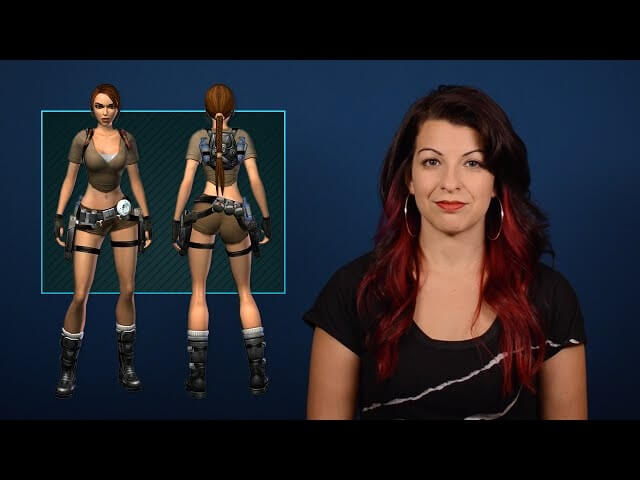Feminist Frequency takes on “strategic butt coverings” in video games

Anita Sarkeesian’s controversial but frequently incisive Feminist Frequency channel and “Tropes Vs Women In Video Games” YouTube series has returned with a new episode devoted to documenting sexism in game design. This time Sarkeesian turns her attention to the butt, though not with the admiration and wonder of noted butt enthusiast Tina Belcher of Bob’s Burgers. No, in this case, the issue is whether game designers unnecessarily draw attention to the butts of female characters while going out of their way to avoid depicting the butts of male characters altogether. Sarkeesian has compiled numerous examples to show that they do, and she argues that “these carefully crafted choices about camera angles and clothing significantly impact how players think about and relate to these characters.”
Naturally, this discussion begins with the Tomb Raider franchise and its scantily clad heroine, Lara Croft. Like many female characters, Croft is depicted from a third-person perspective in a full-body view in the early titles in her series, and the camera angle frequently puts Croft’s butt in the very center of the frame. But Croft is hardly alone in this respect. Catwoman is depicted in nearly the exact same way in Batman: Arkham City, for instance. Meanwhile, what about the male characters and their butts? Generally, says Sarkeesian, either the camera prevents the player from seeing male characters below the waist altogether, or the male characters’ posteriors are covered by costumes or props. There is an amusing sequence in which Sarkeesian points out that Batman’s cape seems specifically designed to keep anyone from seeing his muscled rear end. So is the answer to depict more male butts to keep it fair? Sarkeesian doesn’t think so. As she puts it,
Equal opportunity butt display is definitely not the answer. Rather, the solution is to de-emphasize the rear ends of female characters so that players are encouraged not to ogle and objectify these women but to identify and empathize with them as people.